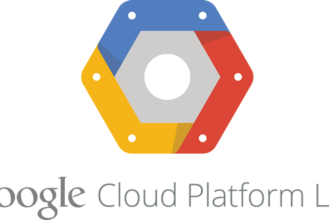Cloud computing continues grabbing headlines as one of the biggest technology trends gains momentum. Businesses and individuals have come to realize the benefits of the cloud, including convenience and cost savings, so they increasingly choose cloud services to stay competitive.
Cloud computing continues grabbing headlines as one of the biggest technology trends gains momentum. Businesses and individuals have come to realize the benefits of the cloud, including convenience and cost savings, so they increasingly choose cloud services to stay competitive.
The cloud has leveled the playing field in many ways, getting small companies a chance to use the powerful software they need while paying only for the resources they use, without making substantial IT infrastructure investments. Cloud services also give companies the freedom to scale up or down to meet their demand while also adjusting their cost.
Focusing on the capabilities of the cloud can cause you to forget about the environmental benefits derived from the technology. Cloud-based computing contributes to the green IT movement by bringing vital energy and resource efficiency to the business world.
Defining Green Computing
Green computing has become important at a time when environmental consciousness has peaked. Businesses and individuals alike look for ways to minimize the impact of daily life on the world around us, to preserve it in good condition for future generations.
Green IT acknowledges the infrastructure problems that, in the past, kept IT in the domain of large corporations. Small companies would have to spend money buying dedicated servers and software that would help them operate. In many settings, such infrastructure was underutilized resulting in wasted capacity and energy.
Cloud technology contributes to the mission of green IT by minimizing the number of computers in use. Service providers operate large server farms that use advanced power saving technology to keep our use down while serving a significant number of clients with the same hardware, eliminating the redundancy that occurs when every company buys needed equipment. In the end, more customers receive increased capabilities while making a smaller environmental footprint. Cloud computing also reduces the amount of electronic waste produced by our society while streamlining the recycling process.
The Benefits of Green Clouds Usage
Using green clouds provide numerous benefits that support business. The following examples will help you understand.
Efficiency
Even with the improvements in energy efficiency, digital warehouses, and data centers consume the electricity equivalent to 30 nuclear power plants. Much of that power goes to running idle servers.
Virtualized resources allow many servers to run on a single machine, concerning material resources and space while minimizing energy requirements. Web hosting companies have capitalized on such efficiency for a long time by eliminating the need for every business to own a web server.
Such shared configurations run separate operating systems and software on virtual machines as if they were physical units. The resource efficiency gains supplied through virtualization reduces the number of working machines needed and the energy required to run them.
Automation
The consolidation of the IT industry through automation has expanded the capabilities of IT professionals, reducing the staffing needs of your company. A single worker can now with a mouse click perform tasks that once took many people many hours to complete.
Batch processes can rapidly deploy hundreds of virtual servers while automatically scanning network resources for security flaws. Automation has pushed consolidation ratios to new highs further reducing the physical infrastructure and energy needed to power IT.
Cloud-based Infrastructure
Infrastructure as a service (IaaS) now power the projects and company expansions that formerly required you to buy new servers and use more energy. You can now get all the servers and network infrastructure you need simply by contacting your service provider.
Pay as You Go
Modern self-service applications give your business access to the resources it needs for as long as you need them. Such availability reduces the load lifecycle management has on your firm and promotes the efficient use of IT services. As your demand increases, you can pay for additional services without increasing your environmental footprint.
Alternative Energy
Data centers can only conserve a certain amount of energy, forcing cloud providers to pursue alternative energy sources as a way to enhance their Green IT credentials. By reducing the carbon footprint of the energy used for IT through the utilization of the wind and solar power, service providers play a pivotal role in maintaining environmental responsibility.
Waste
Equipment gets old and requires replacement, even in the most efficient clouds. Still, cloud computing reduces the amount of waste because it uses fewer physical devices than old-school IT. Cloud-based service providers increasingly have adopted policies to ensure that less of their equipment ends up in landfills. For example, some old data center technology still works well for private individuals, enabling companies to either sell or donate equipment taken out of service to give it new life and keep it out of the trash. Similarly, organized recycling programs process electronic waste in responsible ways.
Software
Cloud computing makes the use of IT resources efficient through the provision of software as a service (SaaS). Applications that once required particular processor, storage and memory configurations now run through web browsers. Software services eliminate complicated installation processes and the specialists needed to perform them. Your company no longer needs to fret over computer specifications, because the cloud-based software you need runs on practically any computer or device.
Thanks to the cloud, your business can operate with remarkable resource and energy efficiency without the need for and IT department. The cloud extends the capabilities of IT professionals, by enabling them to provide services remotely to many business locations or even multiple companies. As a result, the cloud yields additional benefits, by reducing the pollution associated with business travel and commuting.









